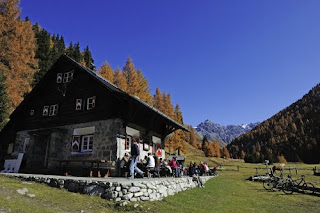- Trips
- Tour Calendar
- About Our Tours
- Plan a Trip
- Book a Trip
- About Us
- Contact Us


Location: Swiss National Park, Graubünden Distance: 7.5 miles round trip
Duration: 4 hours
To truly appreciate Swiss National Park, a bit of explanation is in order. Swiss National Park is not the most beautiful, majestic, or photogenic landscape in all of Switzerland. It is, however, the only true wilderness in Switzerland. And in a part of the world that has been inhabited for thousands of years, and intensively farmed, grazed, mined, and worked for at least the last thousand years, wilderness is a rare commodity.
For the past 100 years, Swiss National Park has been a strictly protected wilderness area where flora and fauna can develop freely, where hunting, grazing, forestry, and mining are prohibited, and where natural processes like floods, fires, avalanches, and predatory animals are allowed to run their course unhindered. As a result, some of the best wildlife viewing in Switzerland can be found in Swiss National Park--and that's exactly why Val Trupchun (pronounced troop-CHOON) is such a rewarding and popular destination.
The trailhead is easily accessible by bus from Zuoz or S-chanf or by following the road leading out of S-chanf to the east in the direction of Varusch or National Park. From the parking area (elevation 5470 ft), follow a dirt road which crosses the Ova da Varusch stream. Within about a mile you'll arrive at the Varusch Parkhütte (5810 feet), operated by the National Park. This valley ahead of you is the Val Trupchun, and the stream is the Ova da Trupchun while the fork to the right (south) is the Ova da Chaschauna. All of these streams flow into the Inn River which runs through the Engadin and eventually into the Danube. The trail stays to the north side of the river and winds through forests of larch and Arolla pine with frequent openings to views of the valley.

Arriving at Alp Trupchun (6693 feet) there are several designated rest areas. Since you are in the protected confines of the National Park, you should stay within these areas. They provide an enjoyable spot to sit down, break out a snack and start watching for wildlife.
You're likely to see wildlife any time during the day-especially marmots that scamper around the immediate slopes-but the secret to the best viewing is to go when the large animals are feeding. By going early in the morning or staying late in the afternoon, not only will you have better viewing, but you'll escape the midday throngs of human visitors. On the slope to the south I've seen large herds of 30 or more red deer. Ibex and chamois sightings are frequent occurrences, but they are most common in the early morning and early evening hours. If your visit is in midday you might have better viewing opportunities by continuing up the trail in the direction of the ridgeline and Fuorcla Trupchun (9127 feet) and the Italian border, where ibex and chamois are frequently sighted on rocky slopes and at higher elevations.
Your return to the trailhead can be along your ascent route, or you can cross the bridge below Alp Trupchun and follow the trail on the opposite side of the Ova da Trupchun. This route rejoins the main route just below the Varusch hut and continues its descent through dense forest back to the parking area.